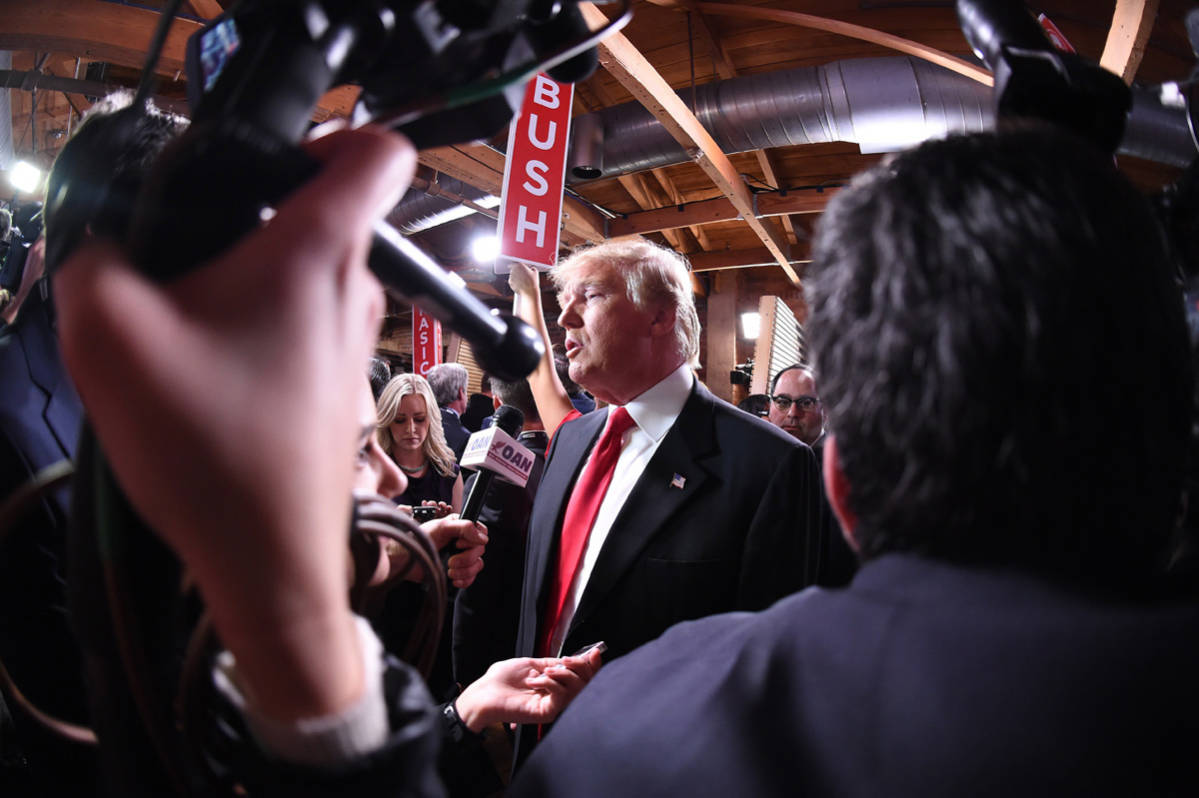Blow-by-blow coverage that gives disproportionate attention to one or two candidates. Some getting short shrift or gratuitously negative coverage. A press obsession with tactics and strategy that outpaces policy differences and leadership characteristics.
Sound familiar?
The second installment of a Harvard study of the 2016 presidential campaign is also a look at how even in the digital age, some basic themes of political reporting never change. And it includes the assertion of clear “journalistic bias” in over-coverage of the Trump campaign even when it was clear he was the Republican nominee.
Thomas Patterson authors the report from Harvard Kennedy School’s Shorenstein Center on Media, Politics and Public Policy that inspects coverage of the primary campaign, “concluding that coverage of the primaries focused on the horse race over the issues — to the detriment of candidates and voters alike.” The first installment looked at the 2015 run-up to the primaries, while this look at coverage of Donald Trump, Ted Cruz, Marco Rubio, John Kasich, Hillary Clinton, and Bernie Sanders through June 2016.
Inevitably, there’s a lot said about Trump amid the large amount of coverage surrounding his candidacy. In particular, the report tries to assess the quantity and quality of coverage in eight mainstream outlets: CBS, Fox, the Los Angeles Times, NBC, The New York Times, USA Today, The Wall Street Journal, and The Washington Post.
Trump’s own assumptions about being a victim of the media doesn’t quite get the support he’d like. At a key juncture, his coverage “was far more favorable than that of either Cruz or Kasich. They got hammered. Cruz’s coverage was 61 percent negative to 39 percent positive, while Kasich’s coverage split 65 percent negative to 35 percent positive.”
“Trump got positive press out of his electoral success. On the other hand, his issue stands and character were sources of negative press. By this point in the campaign, reporters had settled on their meta-narratives—the characterizations they were using in reporting on each of the candidates. ”
When it came to Trump, Harvard’s study describes a press narrative that “included the claim that he was strong and decisive. Those positive elements rested alongside more negative ones—that he was bigoted, insulting, unprepared, and narcissistic.”
But as it became increasingly clear that he wasn’t a flash in the pan, and that his rivals were in trouble, “the horse race got less press attention, reducing the positive press stemming from his electoral success. News references to his policies and character, though still the smaller share of his coverage, were increasing in number and were largely negative in tone.”
The notion of journalism bias arises as the study focuses on Trump dominating the last nine GOP races and essentially assuring his nomination.
“Although Trump no longer had active opposition, he received more news coverage in the last month than did either Clinton or Sanders, a development that has no possible explanation other than journalistic bias. Reporters are attracted to the new, the unusual, the sensational, the outrageous — the type of story material that can catch and hold an audience’s attention. Trump fit that interest as has no other candidate in recent memory.”
On the Democratic side, Sanders coverage was exceedingly positive, it finds, but was far surpassed in volume by what was given Clinton. And, as the race wore on, it finds that Clinton coverage was increasingly favorable, while Sanders began to tilt toward the negative. But the tone, if not the quantity, of Trump’s coverage changed markedly as it became decidedly more negative.
And, yet, the report concedes that it’s not all that rare for the press to be taken with a candidate. “That was true, for example, of Barack Obama’s 2008 candidacy, John McCain’s 2000 candidacy, Gary Hart’s 1984 candidacy, and Jimmy Carter’s 1976 candidacy. Donald Trump can now be added to the list. Any such candidate gets outsized coverage.”
So it’s not that there’s some press conspiracy to intentionally assist a candidate who “who captures their fancy. They are in it for the story, though the political impact is real enough.”
As Mark Silva, a veteran political reporter who’s worked for the Chicago Tribune and Bloomberg News, put it to me Monday, disproportionate coverage for Trump and the Republicans also had a fairly simple explanation: Clinton beating Sanders just didn’t seem the big news as did Trump amassing the needed delegates to rout 16 rivals.
But Harvard’s study does seek a broader framework to view the media’s handiwork. It finds it in a tension between journalism’s natural reflexes and the needs of voters in a democracy.
It’s not until later in the process, when the race is nearly settled, that substance comes more fully into the mix. As political scientist Henry Brady noted, the “primaries force people to choose before they are ready to do so.” They learn, but most of them learn “too late.”
All in all, it’s a sober, systematic report that may almost be too understated in underscoring the historic nature of the Trump candidacy. Yes, there’s once again an inherent tension between journalism values and what the report terms “the structure of the nominating process.”
But then there’s Trump, who has shattered the assumptions of journalists and academics alike.






